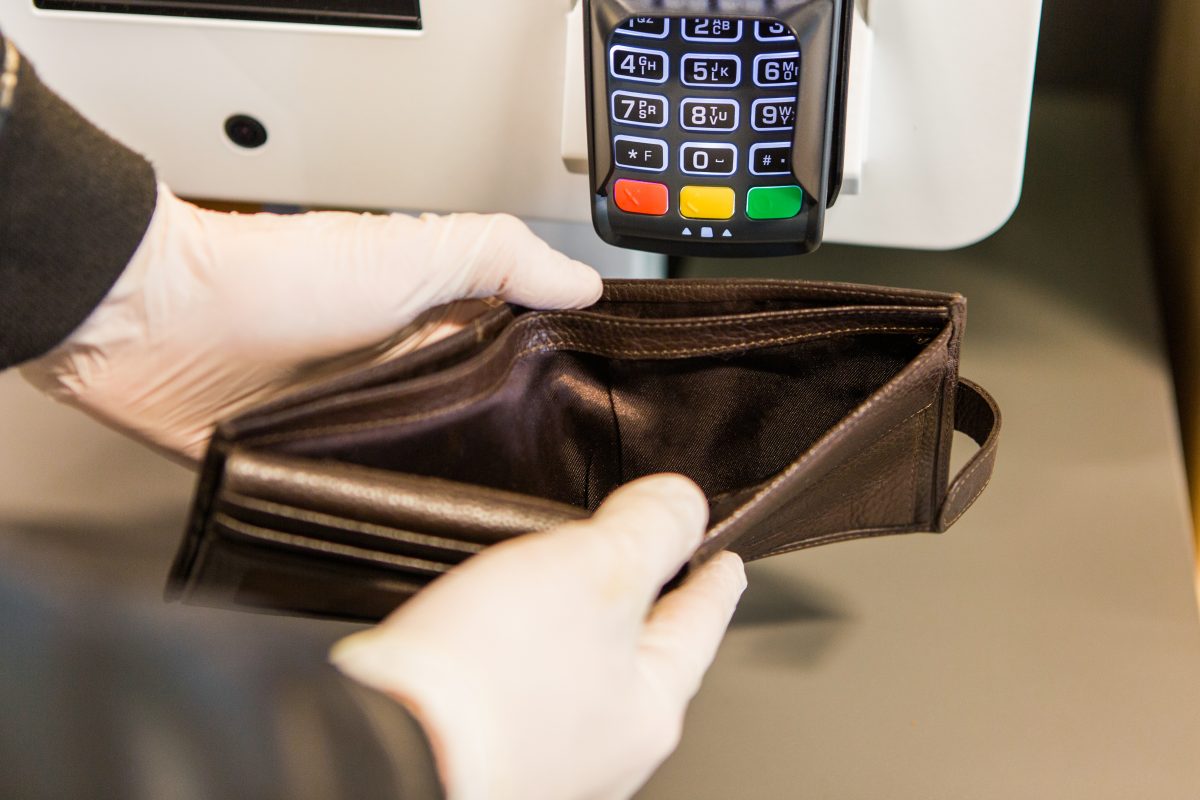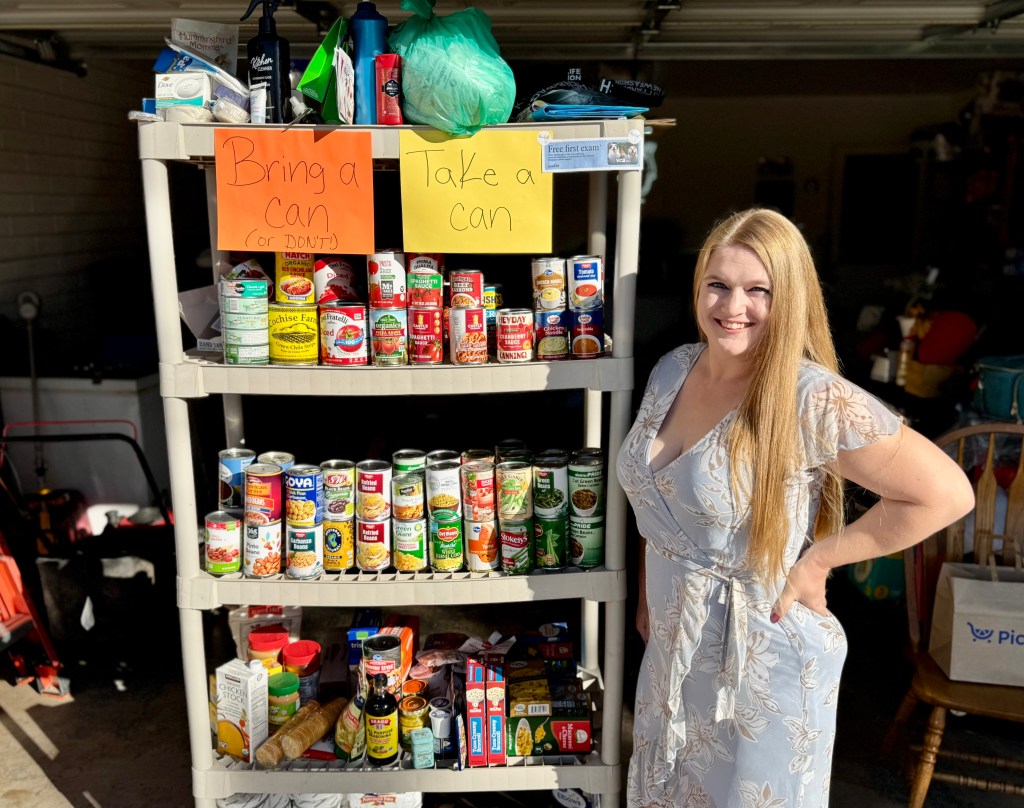
alexander132/adobe

Audio By Carbonatix
With the future of SNAP hanging in the balance, people in Phoenix, concerned for their hungry neighbors, are stepping up to help one another. Restaurants are feeding thousands for free. Neighbors are setting up impromptu food banks in their garages and planning to hand out meals along with candy to trick-or-treaters.
It’s a fraught moment for the country. But people are pulling together. Whether you’re worried about feeding yourself or your family, or want to put your money and time toward taking care of others, here’s what you need to know right now.
What is SNAP?
As the government shutdown reaches the month mark, one particular federal funding program has come into the spotlight. SNAP, or the Supplemental Nutrition Assistance Program, provides money for low-income families to buy food.
This year, make your gift count –
Invest in local news that matters.
Our work is funded by readers like you who make voluntary gifts because they value our work and want to see it continue. Make a contribution today to help us reach our $30,000 goal!
When the federal government shut down on Oct. 1, funding to continue SNAP had not been approved, leaving the program in limbo. Funds were set to run out on Saturday, Nov. 1. Over the last few weeks, plans have been made, reversed and argued over, leaving families who use SNAP benefits unsure where their next meal will come from.
Across the country, 42 million people rely on SNAP benefits to buy food. In Arizona, roughly 900,000 people use that help.
On Halloween, two judges stepped in, ordering the Trump administration to continue funding the program, despite the ongoing shutdown. The ruling may come as a sigh of relief, but SNAP and EBT cardholders won’t see funds for groceries immediately.
What happened to SNAP?
Just prior to the government shutdown, the U.S. Department of Agriculture, which runs SNAP, released a plan to use a contingency fund to provide money for food until the federal program was back up and running. The fund holds roughly $6 billion, enough to cover two-thirds of a month of SNAP benefits nationwide.
But on Oct. 24, the Trump administration reversed this plan. The USDA announced that, in fact, it would be illegal to tap a contingency fund that’s earmarked for emergencies. Never mind that the government used the same fund to support SNAP during prior shutdowns.
On Friday, two judges ruled that the Trump administration must fund SNAP to stop Americans from going hungry. District Court of Massachusetts Judge Indira Talwani found that the plan to pause the food assistance program was illegal. John James McConnell Jr., Chief Judge for the District of Rhode Island, ordered the USDA to continue payments and granted a request for a temporary restraining order.
While the judges ruled that SNAP funding must restart, action won’t be immediate. Talwani gave the administration until Monday to craft a plan on how to fund the program for November. McConnell ordered that the money must be distributed “timely, or as soon as possible,” without providing a specific date.
There is a possibility that the Justice Department could appeal the rulings. And when funds do restart, it typically takes one to two weeks for the money to be distributed to SNAP and EBT cards and finally reach those who need it.
Politicians point fingers
On Friday afternoon, after the rulings, an infantile and blatantly false statement remained at the top of the USDA’s website, blaming Democrats for people going hungry.
“The well has run dry,” the statement claims. “We are approaching an inflection point for Senate Democrats. They can continue to hold out for healthcare for illegal aliens and gender mutilation procedures or reopen the government so mothers, babies, and the most vulnerable among us can receive critical nutrition assistance.”
If you can’t figure out what “gender mutilation” has to do with feeding your hungry neighbors, don’t worry: It is genuinely incoherent. And it’s a cynical effort to politicize the fact that kids, disabled people, old people and people simply down on their luck are about to run out of food to eat.
It’s true that Democrats could, in fact, end the government shutdown. But Democrats have elected to hold out for a deal that would prevent health insurance premiums from skyrocketing for millions of American citizens. By pinning the SNAP freeze on the Democrats, the Trump administration is omitting the fact that it has the power to feed people now, and that it also has the power to make a deal by funding health insurance.
Senate Democrats on Wednesday put forward a bill that would approve SNAP funds for November. Republicans blocked it. Also this week, 25 states and the District of Columbia sued the Trump administration in an effort to compel the government to help people buy food.
What is Arizona doing to feed Arizonans?
More than a dozen states have moved to cover some of the shortfall for their residents.
In Arizona, Gov. Katie Hobbs has allocated $1.8 million to help. Of that, $1.5 million will go to Arizona food banks, and the remaining $300,000 will go to Food Bucks Now. That temporary program provides funds for fresh foods purchased at farmers’ markets or community grocery stores. SNAP cardholders can receive a $30 voucher.
While the assistance may help, it’s a drop in the bucket compared to the $150 million that Arizonans typically receive in food aid every month. Worried about their neighbors going hungry, local restaurants and community members are taking action.
How are restaurants stepping up?
As lawmakers argue, leaving many people feeling helpless, restaurant owners have stepped up in the way they now best: by feeding people.
Among the first Phoenix spots to hop on what has become a national trend was Lovebite Dumplings on Roosevelt Row. Its owner, 27-year-old Angel Gould, posted a video sitting on her floor, explaining that SNAP funds would soon run out.
She invited anyone in need to stop by her restaurant for a free meal. She also explained that customers could pay it forward and purchase a meal for someone else while buying their own. Her tiny shop was quickly flooded with customers leaving donations, and as of Thursday evening, she had received enough funds to feed over 800 people.
“It has been so reaffirming and so exciting in such a dark time in the country to see how many people who want to help,” she says. “I’ve not been feeling very hopeful lately, so this is unbelievable.”
Other local restaurants, cafes and food businesses quickly got on board.

Sara Crocker
Phoenix restaurants offering free meals:
Lovebite Dumplings
116 E. Roosevelt St.
Lovebite will offer free meals from Nov. 1 through 8 from 11 a.m. to 4 p.m. daily.
The Coronado
2245 N. 12th St.
Phoenix vegan eatery The Coronado will offer those with a SNAP card a burrito and a side of chips and salsa from Nov. 1 to 8, from 1 to 5 p.m.
Baked Chemistry
5757 N. Central Ave.
720 N. Fifth St.
Baked Chemistry, a vegan farmers market vendor, is serving pay-what-you-can meals at the Uptown Farmers Market on Wednesdays from 9 a.m. to 1 p.m. and the Downtown Phoenix Farmers Market from 8 a.m. to 1 p.m. on Saturdays.
Stroll Coffee
3015 N. 16th St.
Mobile coffee cart Stroll Coffee plans to offer a free coffee to people who have lost their federal food benefits or have been furloughed or laid off by the government, beginning on Saturday, Nov. 1. Find Stroll at Phoenix’s Dig It Gardens.
The Pemberton
1121 N. Second St.
Downtown Phoenix bar and restaurant collection The Pemberton is offering two tacos and an order of chips & salsa per person for SNAP cardholders.
Food banks kick into overdrive
Fall is already a busy time of the year for local food banks, as we head toward the holidays. But with a surge in demand, Valley food pantries and volunteer organizations have kicked into overdrive.
This comes at a time when food banks were already struggling to meet the need. In the spring, the Trump administration cut about $500 million in food aid nationwide. In Arizona, that meant 1.9 million pounds of food scheduled to be delivered to food banks never arrived.
Food banks were given no notice of the cuts. People who rely on that assistance felt the impact. At St. Mary’s Food Bank, one of the country’s largest food banks, emergency food boxes that typically held 13 to 15 items were reduced to 10 to 12. Eggs and milk were replaced by less expensive items.
Food banks now are stretching their resources even thinner. Valley food banks are seeking donations of money, non-perishable food items and volunteer hours.
Where to find your local food bank:
The Arizona Food Bank Network points Arizonans to their closest resource.
The Society of St. Vincent de Paul’s has locations throughout the Valley.
St. Mary’s Food Bank locations provide food across Arizona.
Mountain Park Health Center hosts food distribution events around the Valley.

Sara Crocker
Neighbors support their communities
While food banks work around the clock to feed the Valley, Phoenix neighbors are stepping up to help on a very local level.
In neighborhoods across town, people are organizing their own food pantries and food distribution events. One such event falls on Halloween.
Allison Gullick, president of the neighborhood association for midtown’s Westwood Village & Estates, said she was inspired to pass out more than candy after she offered applesauce last Halloween. One child who grabbed a pouch said that meant there would be something to eat for lunch the next day.
“That shook me to my core,” Gullick says.
This year, the need for food has multiplied.
North Phoenix neighbor Chelsea Kenney has set up a mini food pantry in her garage. Colorful handwritten signs say “Bring a can (or don’t)” and “Take a can.” Her small pantry has quickly grown.
“I thought originally I was going to probably only be able to feed maybe four or five families,” she says. “Now it seems like it’s going to turn into a little bit more than that with the help of the community.”
While people in power point fingers, Phoenicians have come together. Food banks and restaurants may help people weather the coming days. Volunteers and generous neighbors know that vulnerable people deserve to be more than a bargaining chip.